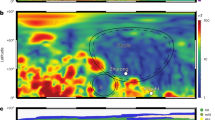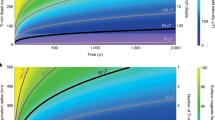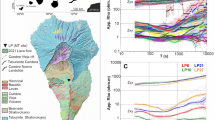Abstract
IT should be a source of considerable pride to British men of science that so many of the discoveries in terrestrial magnetism have been made in England. And yet, owing to the absence of a complete and carefully written history of the development of this science, probably few could enumerate all the achievements in this subject by Englishmen.
This is a preview of subscription content, access via your institution
Access options
Subscribe to this journal
Receive 51 print issues and online access
$199.00 per year
only $3.90 per issue
Buy this article
- Purchase on Springer Link
- Instant access to full article PDF
Prices may be subject to local taxes which are calculated during checkout
Similar content being viewed by others
References
See remarks in Physical Review, vol. ii. No. 1, p. 72.
Entitled "The Earliest Isoclinics and Observations of Magnetic Force." (Bull. Phil. Soc. Wash., vol. xii. pp. 397–410.)
When Graham discovered, a few years after the publication of Whiston's book, that terrestrial magnetism is subject to a daily variation, Whiston perceived the inutility of his method. See "Memoirs of the Life and Writings of Mr. William Whiston. Written by himself." (London, 1749, vol. 1. p. 297.)
"Sv. Vetensk. Akad. Handl," 1768, p. 193.
Whiston even calls these lines also "Magnetick Parallels."
Proc. Roy. Soc., vol. xi. p. 144: "The angle of intersection of the meridian and isoclinics has been diminishing up to about 1840, when a reversal took place, and the angle is now increasing."
Rights and permissions
About this article
Cite this article
BAUER, L. Some Early Terrestrial Magnetic Discoveries Pertaining to England. Nature 51, 295–297 (1895). https://doi.org/10.1038/051295c0
Issue Date:
DOI: https://doi.org/10.1038/051295c0
Comments
By submitting a comment you agree to abide by our Terms and Community Guidelines. If you find something abusive or that does not comply with our terms or guidelines please flag it as inappropriate.



